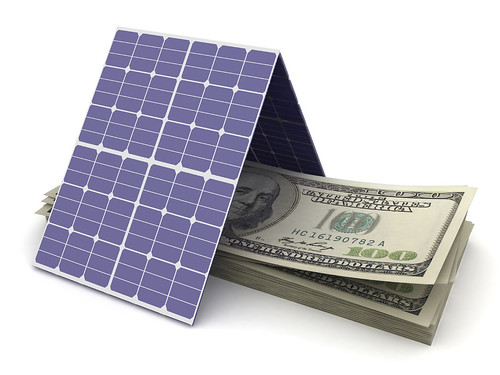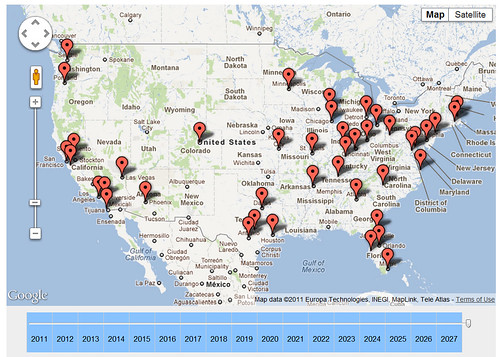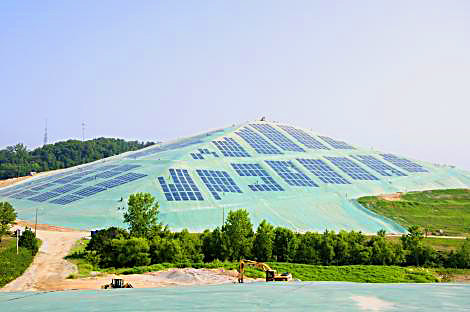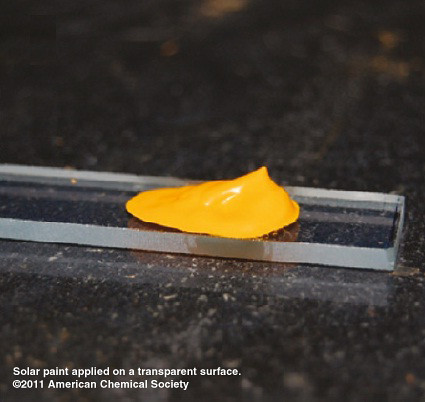Rhone Resch, president and CEO of the Solar Energy Industries Association, recently
published this review of the U.S. solar energy market in 2011, including what
he called seven truths about the American solar industry.
“In contrast to some of the recent headlines, the
solar energy industry is a strong, thriving industry in the United States that
is creating jobs and lowering costs for the consumer. In 2011, a number of
myths about the solar energy industry circulated nationally. Let’s set the
record straight. Here are seven truths about this thriving American industry:
1. Solyndra did not kill the industry. In fact, the
solar energy industry is expanding rapidly and has become a highly competitive,
thriving industry in the United States. Solyndra’s high-profile bankruptcy in
August was an anomaly in what proved to be the industry’s most successful
quarter on record. Although Solyndra couldn’t compete, the rest of the industry
grew by 140 percent in the last year and costs came down by 40 percent. America
discovered that one company’s failure does not reflect an entire industry. In
fact, 9 out of 10 Americans feel it’s important to develop and use more solar
in the U.S., according to an independent national poll conducted a month after
Solyndra declared bankruptcy.
2. Today, U.S. solar is an economic force: employing
more than 100,000 Americans at 5,000 businesses across all 50 states. The solar
industry proved itself to be a strong job creator in the United States. The
vast majority of the 5,000 companies that make up the industry in the U.S. are
small businesses, engines of growth for our economic recovery. These are real
people in real solar jobs as reported by The Solar Foundation’s National Solar
Jobs Census 2011. The solar value chain includes engineers, sales people and
other administrative professionals as well installers, roofers, electricians,
plumbers and contractors – skilled labor professions hit hard by rampant
unemployment in recent years – now finding new opportunities to put their
expertise to work in the solar industry.
3. The solar industry is one of the fastest growing
sectors in our economy.The solar industry set a record for installations and
achieved 140 percent annual growth in thethird quarter of 2011. In fact, more
U.S. solar electric capacity came online in Q3 2011 than in all of 2009
combined; Q4 2011 is forecast to be even larger as solar becomes a cost
competitive choice for more homeowners and businesses across America.
4. Consumer, business and industry support for solar
continues to grow. Solar’s growth is leading to rapid innovation across the
spectrum – from factory improvements to new financing and sales mechanisms –
that allow more and more Americans to turn to solar energy. Target, Walgreens,
Whole Foods, Johnson & Johnson, Safeway and others are powering their
businesses with solar. In addition to GE’s investment in new manufacturing in
the U.S., 2011 also welcomed new household-name corporations to the solar
industry, with Warren Buffett’s MidAmerica Energy, Total Energy and Google all
making sizeable investments in solar in 2011.
5. Solar is now affordable for more Americans. Today,
there are 1.5 million households using solar water heating and enough solar
electricity to power 730,000 homes. And solar is becoming more affordable every
day with technology innovation, scaled up manufacturing, faster installation
techniques, and new financing options. The price of solar panels dropped 40
percent since the beginning of 2010 and the average installed system price ropped
14.4 percent from Q2 to Q3 in 2011 alone.
6. Growing markets bring increased competition.
Global trade in solar products has benefitted the United States by expanding
export opportunities for domestic manufacturers, creating jobs and driving down
costs. In fact, the U.S. was a net exporter of $2 billion in solar products in
2010. As global competition intensifies, the need is even stronger for open
markets operating on rules-based trade principles and for governments and
private parties to follow the framework of internationally-negotiated trade
rules.
7. Uncertainty remains as a successful investment
mechanism expires. Congress left Washington, D.C. without continuing the
important 1603 Treasury Program, a program that provides flexibility in how
developers finance projects. This program, which allows the market to choose
winners and losers, was the single most effective policy for deploying a dozen
energy technologies in the last year. The program has spurred completion of
more than 22,000 energy projects across all 50 states and attracted $23 billion
in private investment. The industry will push to renew this successful program
when Congress returns in January 2012.
Solar works for America and 2011 was a record year
for the U.S. solar industry. Although the past year presented challenges to the
solar industry, with American ingenuity, hard work, and smart and consistent
energy policies our industry is on track for another record year in 2012.”
Rhone Resch, president and CEO of SEIA







